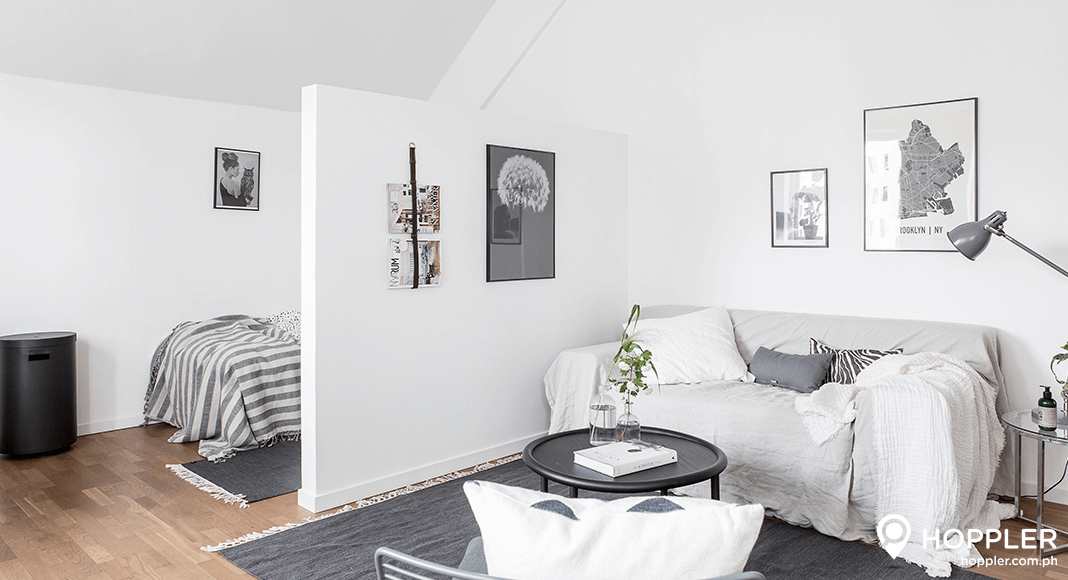How to Create a Minimalist Home Design
The term “minimalist design” is thrown around an awful lot these days. It can be seen in an endless number of ways across all aspects of design – from art to interior design to technology to architecture.
In essence, as the name suggests, it involves only adding the absolute minimum. This allows you to create a clutter-free home that’s spacious, functional, simple and without excess.
In this post, we’re looking at the fundamental aspects of the extremely popular interior design trend and how you can create the look in your own home.
History of Minimalism Interior Design
Minimalist design emerged in the latter half of the 20th century in the art world. It could be seen as somewhat of an antidote to the styles that saturated the rest of the culture and market as well as the consumer-based society. Minimalism aimed to remove the needless excess that had become common with its mentality of “less is more.”
From art, it moved across the design world, being seen across every aspect – including interior design. In interior design, minimalism grew and grew, becoming the hugely popular movement it is today.
Aspects of a Minimalist Home
Let’s take a look at its fundamental aspects and how you can apply the trend to your home.
Remove the Clutter
The most important aspect of a minimalist home is to remove clutter. This should be done for all spaces. Make sure counter-tops, eating areas, dressing areas, and just about everywhere else are free of those everyday objects that get left around. Keep everything out of sight, and get rid of anything that you don’t need.
In addition to the general junk clutter, any unnecessary furniture and accessories that serve no useful function should be removed. Just keep the bare bones of the room and take away the rest.
This point will be continued throughout the rest of your themes so keep it in the forefront of your mind.
A Minimalist Color Palette
One of the key points when creating a minimalist style in your home is the base color you use. Stick to a white or neutral background color and limit secondary colors to one or two different tones. This will help you to control the color scheme of your room and stop it from becoming too busy.
But why only use whites and neutral colors? As they help to give your room a clean, fresh and clutter-free atmosphere with a feeling of calm.
Split your three color groups into sections. For the background color, aim for 60-70% of your room to be in this room. For the next color, aim for 20-30% leaving 10% for the final color. This will help you stick to your minimalist color scheme but give you some freedom to play around with.
Choose the Right Furniture
When it comes to the furniture, keep your choices basic with as much space in between pieces as possible. Opt for quality pieces that serve their exact purpose and create a balance with each other.
Modern furniture with straight lines fit in well with a minimalist style, especially when it comes to chairs and sofas.
As you’re trying to avoid visible clutter, ensure the furniture you add has plenty of enclosed storage. Multi-functional furniture with storage lets you keep a clear and clean aesthetic.
Get the Flooring
Getting the right flooring can somewhat finish off your minimalist look. The best option is a light colored solid wood flooring or a large marble tiled floor that’s neutral. If you’ve gone for white or very light walls, you could create a contrast with a dark floor, sticking to the color scheme discussed above.
Whatever you choose, try to keep the floor as clear as possible. Create large open spaces by keeping furniture against walls. If you’re short on space, wall mounted furniture will open up the floor space and give the impression your room is larger.
Add Texture
Adding texture to your minimalist design will help to brighten up your space and add to its depth. Try adding textiles in various forms as well as glass, clay and even nature.
A unique way to add to the texture of your room is to add a rug that stands out against but complements your flooring. Keep your texture within your chosen color palette to maintain the minimalist effect.
The right combination of textures can make a minimalist home feel cozy and warmer whilst maintaining the style. Stick to your color scheme and avoid overdoing the accessories.
It’s All About the Art
The wall decor is where you can add a personal touch to a minimalist home. You can also add in your secondary colors to brighten up a room.
Whether you opt for paintings, photographs, sculptures etc., choose whatever type of art you like and shows off your personality. This will give your room character and help breathe life into it.
Remember that “less is more,” so keep it simple but have some fun with your choices.
If you don’t want to add color, black and white photographs will work well, especially against a white wall.
Get the Right Lighting
To go with the free and clear feeling of your minimalist home, try to let in as much natural light as possible. Avoid heavy window dressing and opt for light curtains and voils if any.
In terms of artificial lights, you can be a little more experimental. Large, low-hanging lights make a striking accent above a table. Floor-standing lights can also look great, especially when stood behind furniture as they don’t take away your visual floor space.
If you add a light to a counter-top or sideboard, use it as a feature and avoid any other accents around it.
Final Thoughts
Whether you’re looking at completely adopting minimalism or just want to use some of its key principals, your main focus should be to remove the excess and only keep what’s necessary. Remove the clutter and keep your space simple with a clean color palette.
Like with all interior design styles, make it your own and don’t feel too constrained to the rules.
Author Bio
David Atkinson is a content creator at Perfectly Engraved, a retailer of premium gifts, trophies and awards. He’s passionate about home decor and has created a huge number of articles on the subject. When not writing, David will likely be found walking with his dog and wife or watching a film or TV series.



